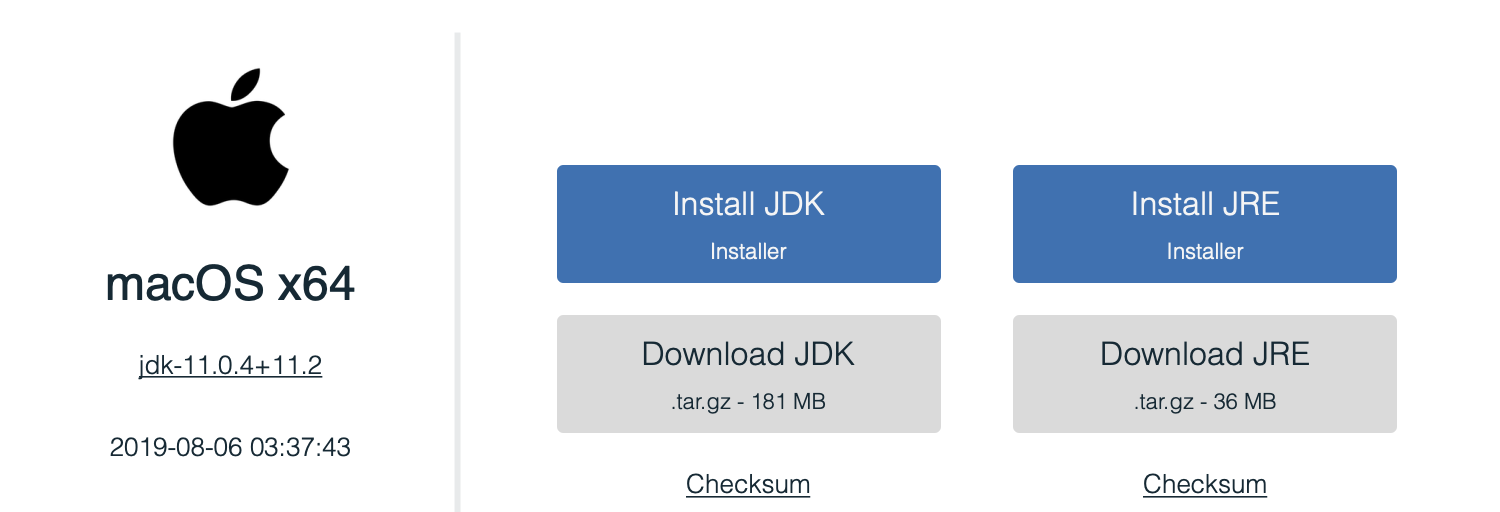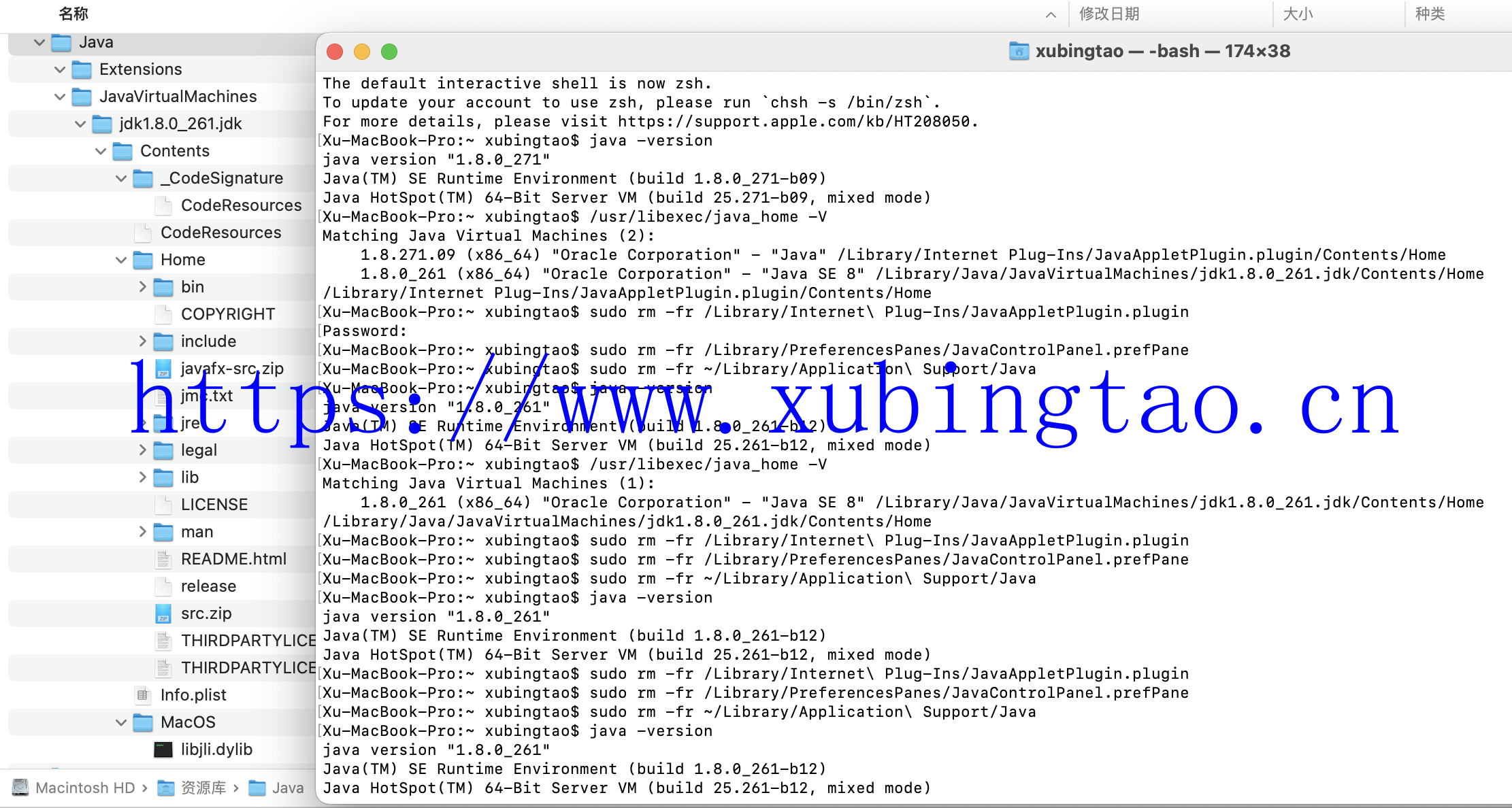


In that case Step 2 above will give you /usr/bin/java -> /System/Library/Frameworks/amework/Commands/javaĪnd that particular java binary is a stub which will resolve the actual java command to call by consulting the JAVA_HOME environment variable and, if it's not set or doesn't point to a Java home directory, will fall back to calling java_home.
#Locate jdk on mac for mac
Configure your 'preferences' setting in Visual Studio for Mac (Or Xamarin Studio) Navigate to 'Preferences' and select the 'Locations' tab before copying in the location addresses. This has changed over time, but if you're using Mac OS X 10.9 or newer (now macOS ), your JDK/SDK JAVAHOME location for Java 8 will be something like this: /Library/Java/JavaVirtualMachines/jdk.jdk/Contents/Home.
#Locate jdk on mac install
If usr/bin/java points to another symbolic link, recursively apply the same approach with ls -l Īn important variation is the setup you get if you start by installing Apple's Java and later install Oracle's. If you are not able to build using Visual Studio for Mac because Android SDK, NDK and JDK seems to be missing, you will need to configure your preferences settings. On my system, this outputs /usr/bin/java -> /Library/Java/JavaVirtualMachines/jdk1.7.0_25.jdk/Contents/Home/bin/javaĪnd therefrom you can read the Java home directory If that gives you something like /usr/bin/java, which is a symbolic link to the real location, run ls -l `which java` ), with the ability to explicitly specify the desired Java version and architecture, or even request the user to install it if missing.Ī more pedestrian approach, but one which will help you trace specifically which Java installation the command java resolves into, goes like this: If you check out its help text ( java_home -h), you'll see that you can use this command to reliably start a Java program on OS X ( java_home -exec. This is the natively supported way to find out both the path to the default Java installation as well as all alternative ones present. The best generic way to find this out is to run /usr/libexec/java_home OpenJDK 64-Bit Server VM 18.The location has changed from Java 6 (provided by Apple) to Java 7 and onwards (provided by Oracle).

OpenJDK Runtime Environment 18.9 (build 11+28) bash_profile) and then running each alias, now I’ve got OpenJDK 11 set up and ready to go! $ j11 bash_profile, I now have: alias j11="export JAVA_HOME=/usr/libexec/java_home -v 11 java -version"Īlias j10="export JAVA_HOME=/usr/libexec/java_home -v 10 java -version"Īlias j8="export JAVA_HOME=/usr/libexec/java_home -v 1.8 java -version"

Updating my aliases to quickly switch versions in my. Once you’ve moved it there, java_home -V now shows the new JDK in place: $ /usr/libexec/java_home -Vġ1, x86_64: "OpenJDK 11" /Library/Java/JavaVirtualMachines/jdk-11.jdk/Contents/Home gz file to the same location would make sense. Knowing that your available JDKs are installed to /Library/Java/JavaVirtualMachines/ by default, moving the contents of the downloaded OpenJDK 11 dir from inside the. Library/Java/JavaVirtualMachines/jdk1.8.0_151.jdk/Contents/Home To switch between JDKs, use /usr/libexec/java_home -v version (e.g. cd /Library/Java/JavaVirtualMachines List JDKs: ls In my system, there are two SDKs (JDK8 and JDK11): bash-3.2 ls jdk-11.0.9.jdk jdk. Change directory to /Library/Java/JavaVirtualMachines. The system version is 11.1 (macOS Big Sur). usr/libexec/java_home -V: This lists all installed JDKs, which is shown below: $ /usr/libexec/java_home -Vġ0, x86_64: "Java SE 10" /Library/Java/JavaVirtualMachines/jdk-10.jdk/Contents/Homeġ.8.0_151, x86_64: "Java SE 8" /Library/Java/JavaVirtualMachines/jdk1.8.0_151.jdk/Contents/Home This article provides the steps to locate Java JDK location on macOS. usr/libexec/java_home: This will show you where the current JDK home is, for example: /Library/Java/JavaVirtualMachines/jdk-10.jdk/Contents/Home If you’ve done any fiddling with different JDK versions on MacOS before, you’ve probably come across the ‘/usr/libexec/java_home’ utility, which composes a number of useful things relating to the JDK that you’re currently using in your PATH. Click here for my previous article about this utility and answers to this StackOverflow post, which includes one of the most extensive and useful guides to running different JDK versions on MacOS that I’ve seen. tar.gz for OpenJDK 11 directly from, there’s no obvious installation instructions (at least that I could find) on the OpenJDK website or in the.


 0 kommentar(er)
0 kommentar(er)
